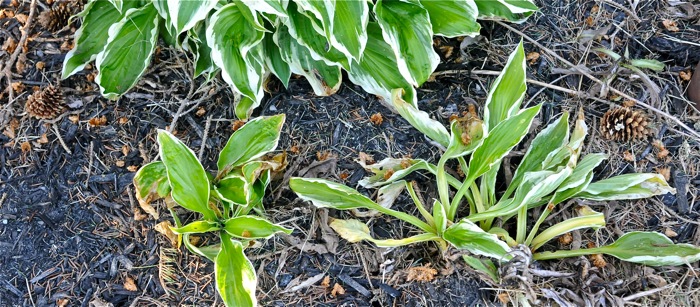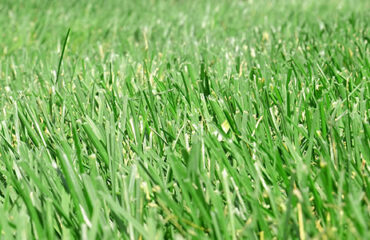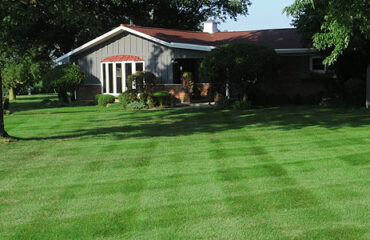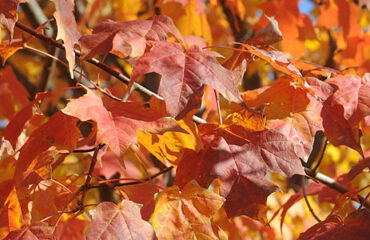It goes without saying that almost every garage of every American homeowner has at least one bottle of weed killer in it. It’s a prerequisite for having a yard, so we’re told.
The fact is, that a spray bottle of Roundup (otherwise known as Glyphosate) is a handy item to have when you need it…if you know what to spray, and when to spray it. If you know neither, you’d best leave the spraying to someone else.
After all, what self-respecting man of the house has time to be bothered with labels, right?
Well, better to take the time. Roundup is a good product, but it’s not a product for killing broadleaf weeds in your yard. Roundup is designed to kill everything it touches (notice damage to verigated hosta, above), including the grass. It tells you right on the label.
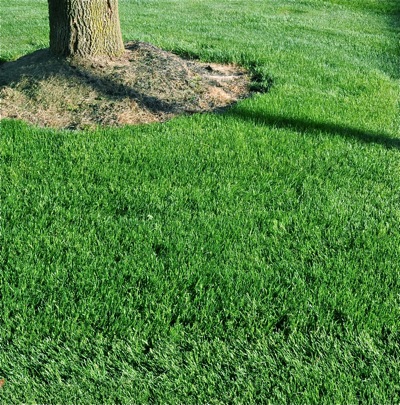
2-4-D products are excellent for keeping turf, like this bluegrass, free from broadleaf weeds.
Likewise, a lot of people by 2-4-D products expecting it to kill everything it touches…hoping that it will. But it won’t. 2-4-D and derivatives will only kill broadleaf weads…dandelions, buckhorn, chickweed, etc. If you’re trying to kill grass growing in beds and sidewalks you’re using the wrong product.
While it’s important to use the right chemical, it’s also important to know when you use it. A lot of people spray dandelions at first emergence in the spring, make them wilt, and then demand a refund when they recover and grow back. Why? Because until temperatures rise to a point for maximum plant growth no weed-killing product works with efficiency. After all, the way they work is to make weeds “grow” themselves to death.
Remember, it’s very important to know what you’re spraying, and when to spray it. It’s not hard; it’s printed right on the label. And if you still think that it’s more trouble than it’s worth, call Ever-Green for help and an estimate. It costs nothing to call, and it’s a lot better option than killing more than you intend to.

